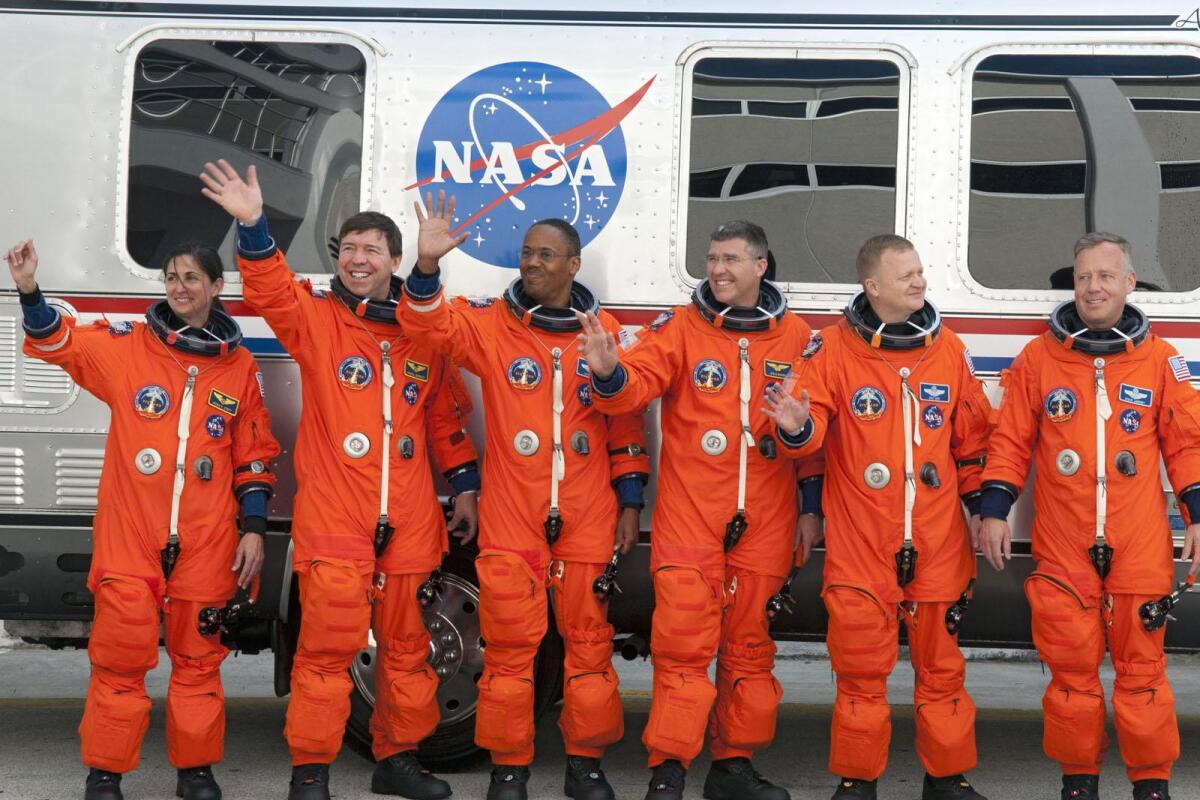At 4:53pm EST Tuesday 24th February, Discovery blasted off two minutes and fifty-three seconds late for its final launch into space. After a tense few moments with an Air Force computer problem, emotions ran high as the NASA space shuttle rocketed through the clear blue afternoon skies. The mission revolves around the delivery of "Leonardo" a Permanent Multipurpose Module (PMM) to the International Space Station. In addition to carrying critical supplies the module delivered Robonaut 2, a dexterous robot that will find permanent residence on the space station.
"With Discovery's mission, the United States once again reaches for new heights, pushes the boundaries of human achievement and contributes to our long-term future in space," said NASA Administrator, Charles Bolden. "Discovery's crew – including the first-ever dexterous robot crew member, Robonaut – will continue America's leadership in human and robotic spaceflight, and support important scientific and technical research aboard the space station."
Robonaut 2 is the latest generation of astronaut helpers and is the first humanoid robot to enter space. Weighing in at 300 pounds, R2 comprises of a head, torso, two arms and two hands. Whilst the dexterous robot has been designed to look like a human, it has also been created to function like one. It is hoped that one day R2 will be allowed to venture outside of the space station to help spacewalkers during repair missions, but for now R2 will be confined to operations in the station's Destiny laboratory.
The six astronauts on board include: Commander Steve Lindsey, Pilot Eric Boe and Mission Specialists Alvin Drew, Steve Bowen, Michael Barratt and Nicole Stott. During days 5 and 7, astronauts Steve Bowen and Al Drew spent 13 hours outside the Space Station on a spacewalk mission. During this time the men camped out inside the stations Quest airlock. In addition they safely delivered the PMM to the station, which involved securing it to an external cable, an achievement in itself. To give the crew more time to help the ISS crew get the PMM set up, NASA added two days to the mission, which also allowed them to work on more equipment repairs.
As the result of a public online contest, on Flight Day 12 the crew of the Discovery received a prerecorded wakeup call from Captain James T. Kirk, aka William Shatner, who delivered a version of Star Trek's opening narration tailored for Discovery. "Space the final frontier. These have been the voyages of the space shuttle Discovery. Her 30-year mission: to seek out new science, to build new outposts, to bring nations together on the final frontier, to boldly go and do what no spacecraft has done before."
At 8.37 a.m. EST, Monday March 7, Discovery fired its jets and separated from the ISS for the final time. After 39 flights out of NASA's 133 missions, Discovery's final 13-day flight is scheduled to come to an end with the return landing at the Kennedy Space Center anticipated for Wednesday 9th March at 11:57 a.m. EST. We wish the crew a safe and happy return to earth.
A Brief History
Discovery is the oldest of the surviving NASA shuttles and first joined the fleet at the Kennedy Space Center in 1983. Its maiden voyage into space was in 1984 when it successfully deployed three communication satellites. In 1990 Discovery carried the Hubble Space Telescope into orbit and in 1991 the Upper Atmosphere Research Satellite (UARS).Discovery was selected two times as the return to flight orbiter, first in 1988 after the 1986 Challenger disaster and for a twin return in 2005 and 2006 after the 2003 Columbia disaster. In addition Discovery was the selected shuttle to carry 77-year old Project Mercury astronaut John Glenn back into space in 1998, making him the oldest man to venture into space.
All in all Discovery has carried out 39 flights, completed 5,247 orbits, and spent 322 days in orbit.
What's next for NASA?
After Discovery, two more NASA missions are scheduled for 2011, first by Atlantis and then Endeavour. The retirement of NASA's space shuttles will see the end of a 30-year program and will leave America without a dedicated spacecraft for launching astronauts into orbit. Nevertheless the future for NASA will involve the development of rockets designed for greater space travel, including to asteroids and Mars.Currently NASA is also committed to working alongside major private companies who are developing commercial space flights to the ISS, however Russia will soon become the sole provider of transportation for astronauts to the station. A handful of U.S. senators and members of Congress have recently expressed support for extending NASA's shuttle program, with Senator Kay Bailey Hutchison (R-Texas) recently filling a bill to reprieve NASA's space shuttle fleet.




















